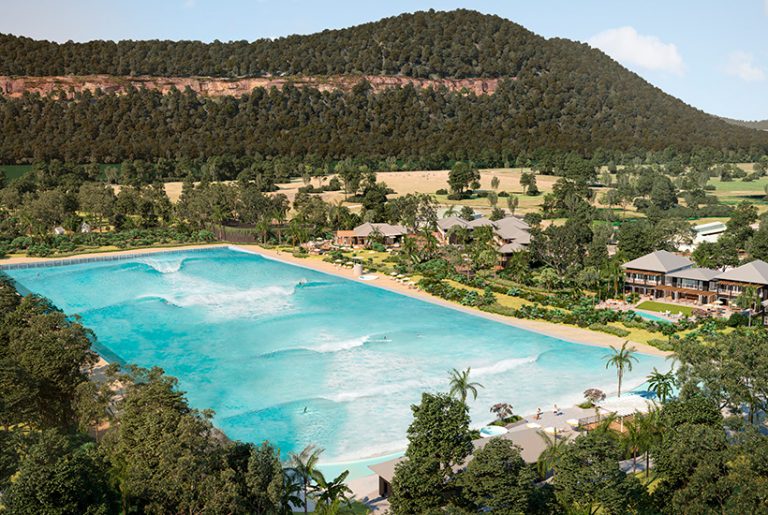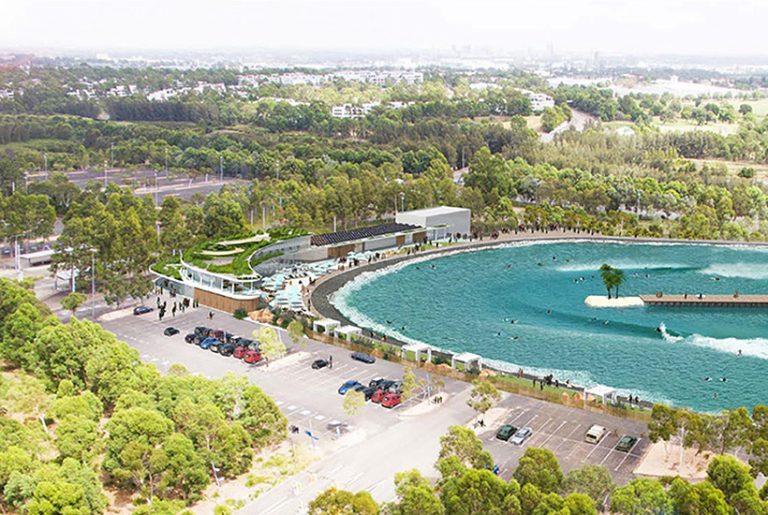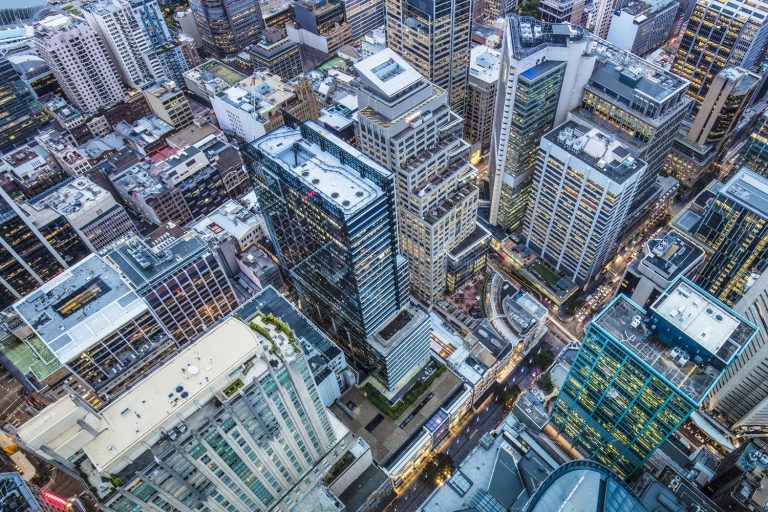Southern Hemisphere’s largest inland surf park coming to Australia
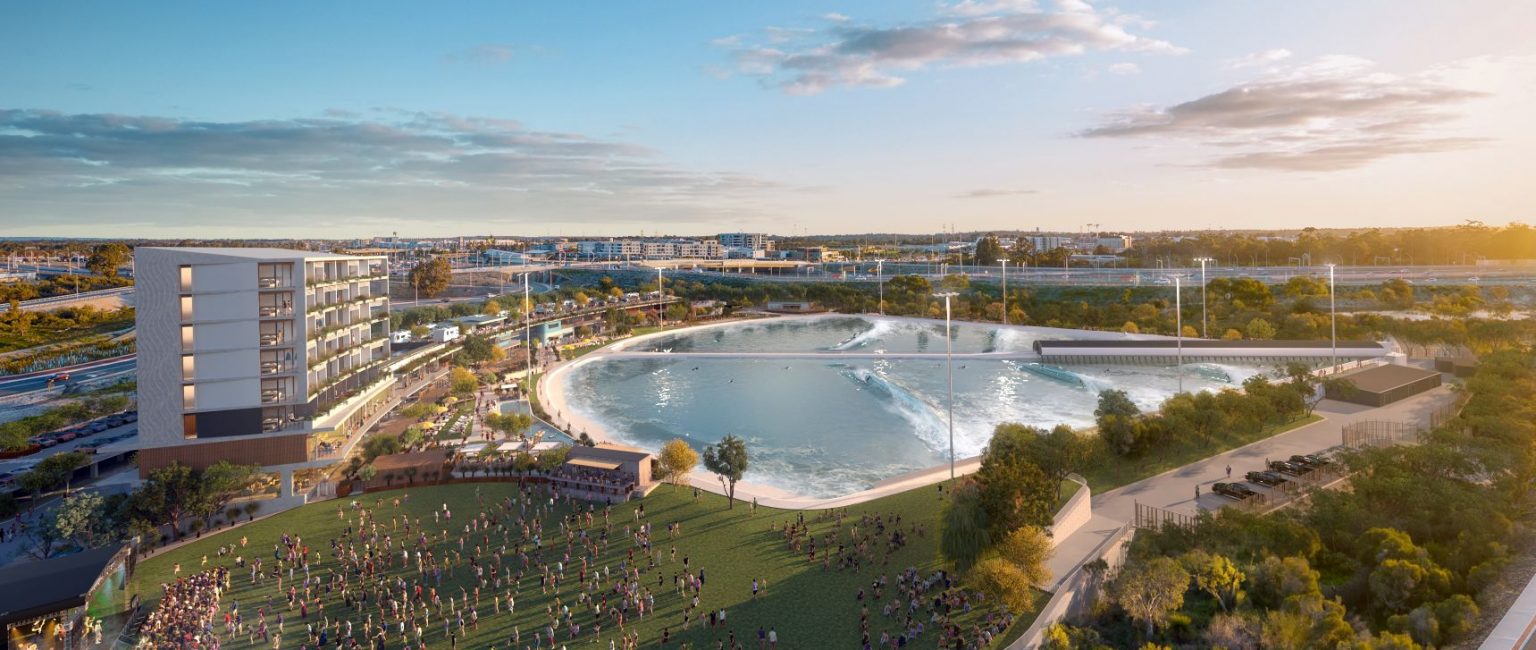
Australia may be home to some jaw-dropping beaches but it’s the growing number of world-class waves to be found in our inland suburbs that are evolving the sport of surfing.
Perth Surf Park, slated to become the largest in the southern hemisphere, was granted development approval on 20 March, with construction to start late this year ahead of an opening in 2025.
Located in Jandakot, 20km south of the Western Australia capital, the $100 million facility will welcome more than one million visitors every year and inject more than $250 million into the state’s economy during its operating life, developer Aventuur projects.
“Surfing is a sport, lifestyle and passion that is ingrained in Australian culture,” the company’s chairman and chief development officer Andrew Ross said.
“We’ve received so much support from local surfers, families and residents on our journey to deliver this project, and we’re committed to creating the best surf park in the world.”
Boom in inland surfing
The development of surf parks has boomed over the past few years.
URBNSURF in Melbourne opened in 2020 and is situated next to the airport, a good 90-minute drive from the nearest beaches.
It offers ‘free-surfing’ sessions and group and private lessons in its 2ha lagoon, which is split by a concrete slab breaking waves to the left and right simultaneously.
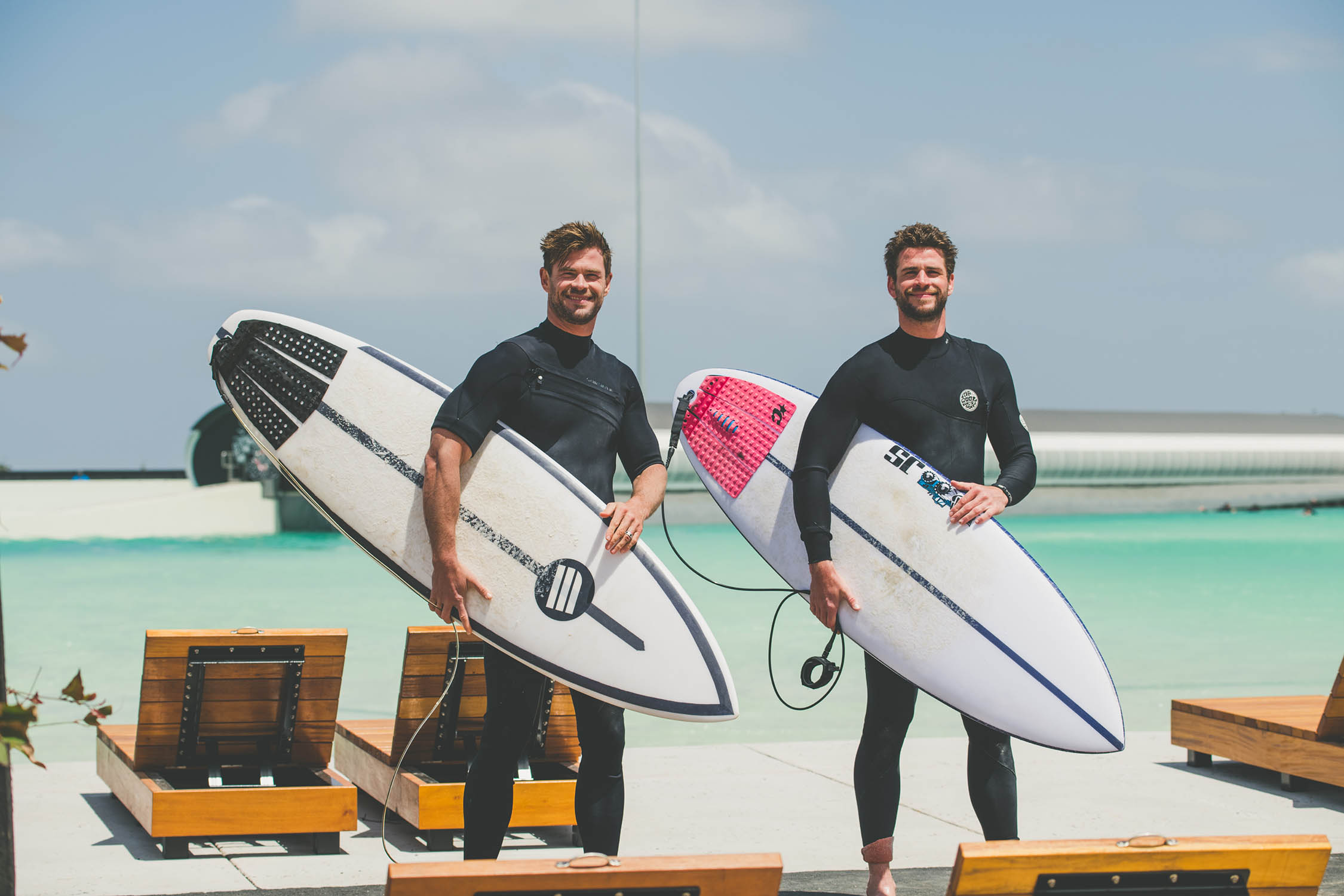
Chris and Liam Hemsworth test out the artificial waves at URBNSURF in Melbourne. Picture: URBNSURF
URBNSURF Sydney, to be located at Sydney Olympic Park, is currently being built and is slated to open in 2024.
URBNSURF and Perth Surf Park have adopted Wavegarden Cove technology, which can pump out 1000 perfect ocean-like waves every hour.
Surf park zones can use different waves at one time – a ‘diverse wave menu’ offers more than 20 types, suiting everyone from beginners to pros.
Technology means surfing is no longer limited to coastal locations and daylight hours, and isn’t reliant on the weather and conditions, explained Mr Ross, who also founded URBNSURF.
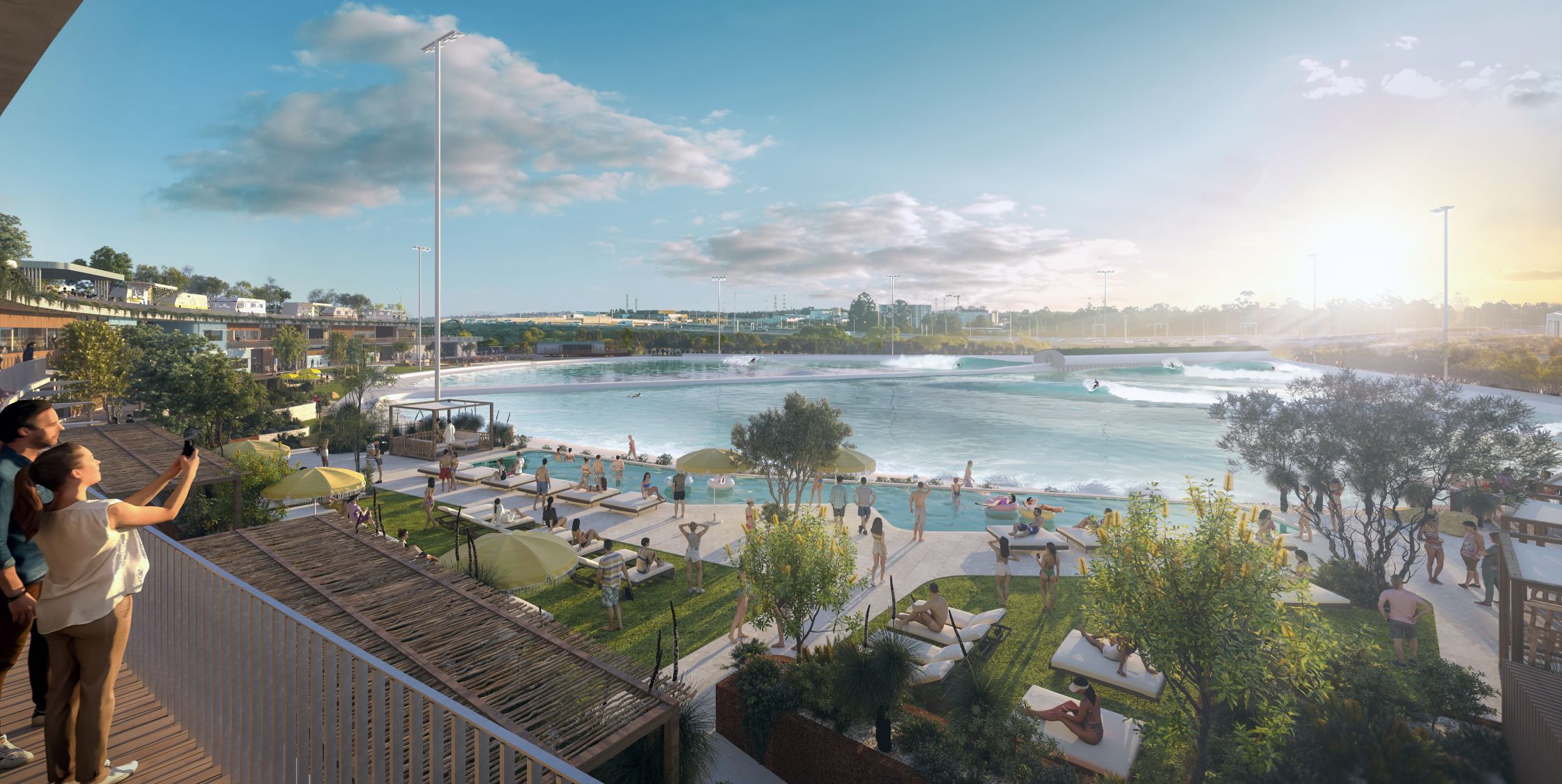
Perth Surf Park is a $100 million project that will open in 2025. Picture: Aventuur
Inland surf parks are also accessible, convenient and safe, he added. Plus, there are no sharks.
“The Perth Surf Park will provide guaranteed perfect waves, both during the day and at night under lights, to suit all abilities in a safe, controlled environment.”
As well as the surfing lagoon, the precinct will also feature a beach club, bars and restaurants, a surfing academy, wellness and fitness facilities, function spaces and a skate park.
The project will take steps to minimise its ecological footprint by targeting a 5 Star Green Star rating for its buildings, using ‘zero embedded carbon’ concrete, sourcing 100% renewable power, harvesting rainwater from the park’s roofs, and banning single-use plastics on-site.
And despite concerns around endangered black cockatoo habitats on the site, the Environmental Protection Authority decided the vegetation was already too degraded.
In March it ruled that the project required no further assessment.
‘Freak of technology’
Inland surfing has come a long way since American pro surfer Kelly Slater stood in 2015 with his hands raised above his head in disbelief as he watched a flawless tube barrel across his wave pool.
In the viral video clip, he describes the man-made wave “a freak of technology”.
Surf parks have now transitioned from experiments to experiences, with a variety of them open around the world and more in development.
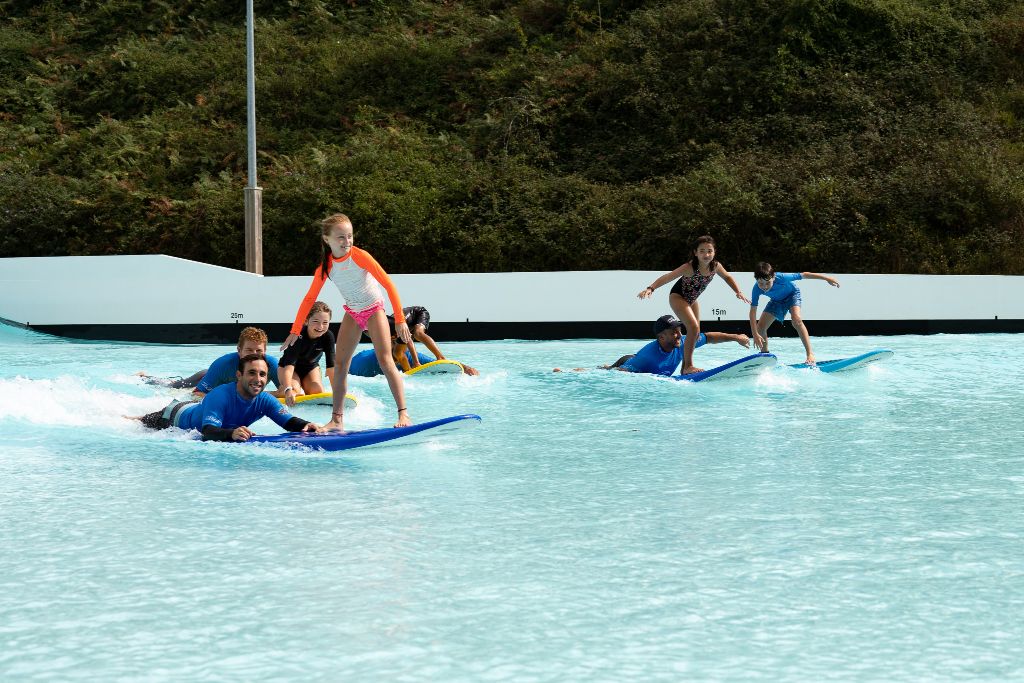
Surf parks cater to all types of surfers, from kids and beginners through to pros. Picture: Wavegarden
Leisure seekers can ride a wave in the suburbs of Bristol in England’s West Country, among the forests and mountains of North Wales, in land-locked Switzerland, in Seoul in South Korea, in inland Brazil, in parks around the US, and even in the middle of the UAE desert.
Meanwhile, a prototype in Yeppoon in Queensland called Surf Lakes uses a plunger or Central Wave Device to displace water and create waves of different shapes and sizes.
Surk Lakes is working to produce an eight-foot barreling wave, which will be the largest man-made wave ever created.
It plans to license its technology to surf parks and resorts worldwide and is currently seeking investors and licencees.
Until then, Slater’s Surf Ranch in California claims to create the world’s longest man-made open-barrel wave: a 6-footer that travels over 2,300 feet (700m), yielding up to minute-long rides.
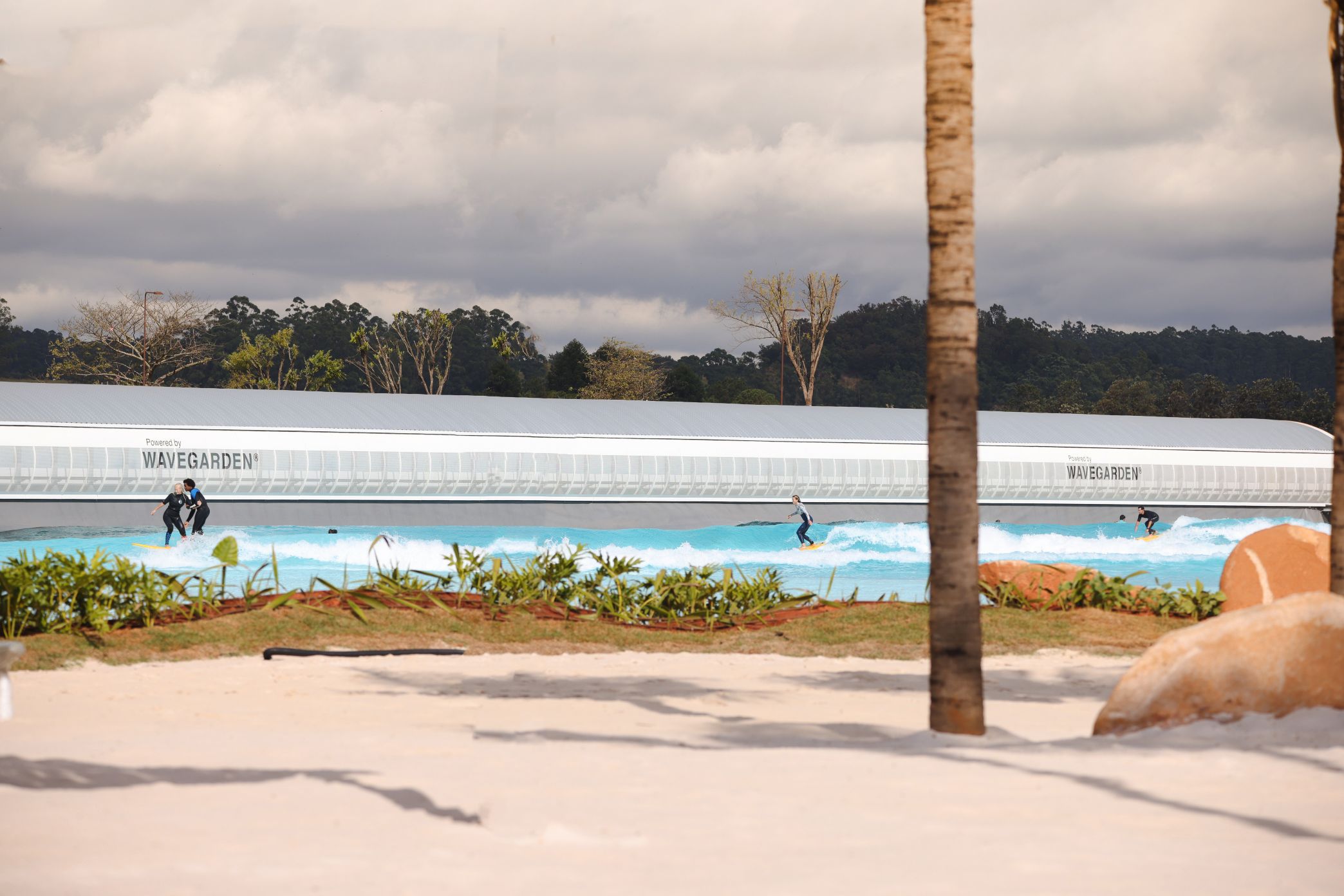
The advanced technology allows the production of perfect waves. Picture: Wavegarden
Ryan Mets, CEO and founder of surf marketplace Boardcave Australia, hopes the opening of more surf parks around the world will attract more people to the sport.
“The introduction of wave pools and surf park resorts is taking the sport inland, making it easier for anyone to get involved,” Mr Mets said.
“It takes dedication and commitment to learn to surf and the barrier to entry is now lower if you live near a surf park.
“We don’t think wave pools will ever take away from surfing in the ocean, but we think they will be hard to stop.
“The fact you can put the kids down to bed and pop out to get barreled is hard to ignore.”

